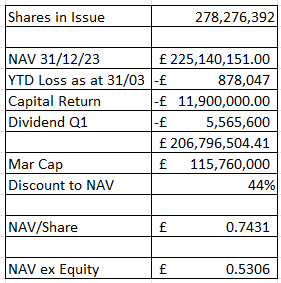
10 June 2024
REITs have historically been fertile ground for active managers.
By Jason Yablon
Cohen & Steers
Index investing reached a milestone in early 2024, with assets in passive investment vehicles surpassing those in actively managed strategies for the first time. On the surface, the appeal of index investing is compelling: passive exchange-traded funds (ETFs) offer lower costs.
And, in the case of broad-based equity and bond categories, active managers frequently fail to consistently outperform their benchmarks. But cheaper is not always better, and not all markets are alike.
Real estate is one area of the equity market that lends itself to active management. REIT managers who commit time and resources to understanding current property fundamentals, shifting market trends and factors that may affect listed equity performance can potentially spot pricing inefficiencies and rapidly implement plans to generate excess returns.
We believe this advantage is reflected in the performance of the largest active REIT mutual funds relative to passive investment vehicles, despite active funds typically having greater expense ratios.
The modern REIT market offers a diverse opportunity set
When investors think of commercial real estate, they may envision office buildings, malls, shopping centres and apartments.
REIT ownership of these kinds of assets exists, of course. However, REITs have become increasingly specialized in new property types since 2000, shifting the REIT market’s composition away from traditional sectors.
For well-resourced managers, these new sectors provide a broad selection of REIT-owned assets for constructing portfolios, many of which have secular growth drivers.
These include data centres, where companies rent by the kilowatt to connect cloud servers; cell towers that lease space to wireless carriers for 5G networks; high-tech distribution hubs that facilitate next-day shipping on e-commerce orders; climate-controlled food storage facilities; biotech research labs; and senior living centres, just to name a few.
Capitalising on distinct sector characteristics
REIT sectors and companies tend to respond to market conditions very differently depending on factors such as lease durations, types of tenants, economic drivers and supply cycles. These differences have historically resulted in wide dispersion of sector returns in any given period.
More economically sensitive sectors with short lease terms, such as hotels and self-storage, can adjust rents relatively quickly to capture accelerating demand in a cyclical upswing.
By contrast, longer-lease sectors such as net lease and health care have more defensive cash flows that may be more resilient during economic downturns. In 2023, returns between the best and worst sectors were separated by 38 percentage points. In other years, the dispersion has been considerably greater.
We have observed that the difference in returns at the security level within each sector is often similar to the variance at the sector level. We believe this dispersion highlights the opportunities active managers have to enhance returns through both sector and stock selection.
Navigating secular growth opportunities and challenges
As economic cycles progress, property types are likely to have different fundamentals. For instance, the pandemic upended retail, hotels and offices, but benefited technology-related REITs amid acceleration in e-commerce and working from home.
And many sectors and cities continue to feel the lasting effects of the pandemic as flexible work-from-home policies have changed how and where people want to work and live, creating an uncertain outlook for offices.
Consequently, high-quality offices may continue to see healthy demand, while lower-quality assets may experience soft demand for years to come – a distinction not likely to be reflected in passive portfolios.
Active managers can also add value by capitalising on regional differences and trends. Many US residents are moving from dense, high-cost northern and coastal cities to lower-cost markets in the sunbelt.
In global portfolios, REIT managers may assess geographic regions to understand local property supply and demand fundamentals, economic trends, monetary policy and other factors that may affect the operating performance of different real estate companies, as well as the markets valuation relative to other regions.
Anticipating secular trends such as these is a key component of active management since they can present opportunities for active managers to capitalize on diverging fundamentals. For example, the divergence in industrial and office properties.
By contrast, passive portfolios are, by design, not able to allocate assets to capitalise on potential secular growth opportunities, nor can they sidestep sectors that may be facing long-term headwinds. Of course, there is no guarantee that active management can successfully navigate these trends.
REIT managers may also invest based on relative value, seeking to allocate portfolio assets based on merit rather than market capitalization, as is often the approach for many passive index funds.
Investing outside the benchmark – participating in special opportunities such as recapitalizations, private placements, initial public offerings (IPOs) or pre-IPO investments – is another way for active managers to add value.
These activities are not within the scope of passive index-tracking strategies – a notable disadvantage in recent years due to the inability of passive vehicles to get out of the way of the secular declines in retail and offices.
Jason Yablon is head of listed real estate at Cohen & Steers. The views expressed above should not be taken as investment advice.








